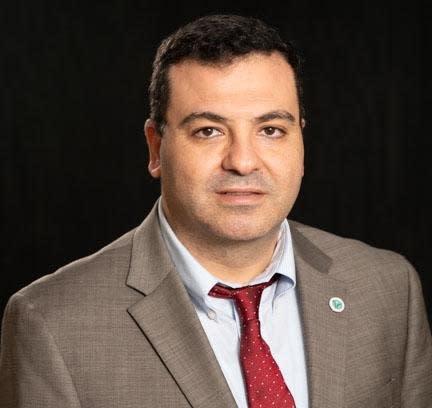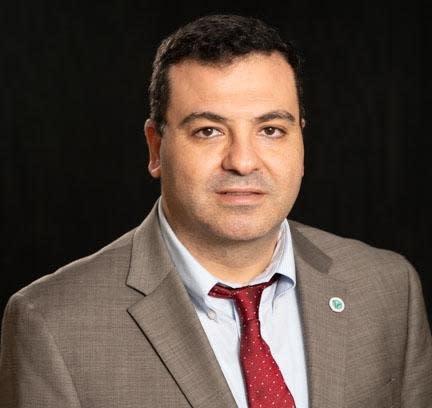
NEW YORK, Nov. 21 (UPI) - A new artificial intelligence system could diagnose autism much earlier in children, according to research to be presented this week at the annual meeting of the Radiological Society of North America in Chicago.
The newly developed system, which analyzes specialized MRIs of the brain, accurately diagnosed children between the ages of 24 and 48 months with autism with an accuracy of 98.5%, researchers said.
A multidisciplinary team at the University of Louisville developed the three-phase system for analyzing and classifying diffusion tensor MRI, or DT-MRI, of the brain. DT-MRI is a special technique that detects how water moves along the white matter tracts in the brain, according to a press release.
"Current tools for diagnosing autism are subjective, especially when evaluating individuals who fall near the borderline between autism and normal development," said co-author Ayman El-Baz, professor and chair of the Department of Biotechnology. engineering at the University of Louisville, at UPI. via email.
"Therefore, there is an urgent need to develop a new, objective technology for the early diagnosis of autism."


The AI system involves isolating brain tissue images from the DT-MRI scans and extracting image markers that indicate the level of connectivity between brain regions.
A machine learning algorithm compares the marker patterns in the brains of children with autism to those of normally developing brains.
Incorrect connections"Autism is primarily a disease of improper connections in the brain," said co-author Dr. Gregory N. Barnes, professor of neurology at the University of Louisville and director of the Norton Children's Autism Center in Louisville, said in the news release.
"DT-MRI captures these abnormal connections that lead to the symptoms children with autism often have, such as impaired social communication and repetitive behavior."
The researchers applied their methodology to the DT-MRI brain scans of 226 children between 24 and 48 months from the Autism Brain Imaging Data Exchange-II. The dataset included scans from 126 children with autism and 100 typically developing children.
The story continues
Therapeutic interventions before the age of three may lead to better outcomes, including the potential for individuals with autism to achieve greater independence and a higher IQ, the researchers noted.
According to the CDC's Community Report on Autism 2023, less than half of children with autism spectrum disorder received a developmental assessment by age 3, and 30% of children who met criteria for autism spectrum disorder received a developmental assessment by age 8 no formal diagnosis.
"Early intensive behavioral intervention within the age range of one to three years may be particularly beneficial due to the phenomenon known as neuroplasticity in the brain of infants," El-Baz said.
Reduction of workloadAn autism assessment would begin with the researchers' AI system, followed by a shortened session with a psychologist to confirm results and guide parents through next steps. It could reduce the workload of psychologists by up to 30%.
The researchers want to commercialize their AI software and get approval from the Food and Drug Administration.
"I'm all for any diagnostic technology that can help us diagnose autism earlier and reliably so that children can access evidence-based interventions earlier," says Dr. Leandra Berry, associate director of Clinical Services for the autism center at Texas Children's Hospital in Houston. , UPI told in a telephone interview.
However, she added, "Many studies will need to replicate this finding before we truly embrace this technology."
Because the ages of the patients in the study range from 24 to 48 months, she noted that the study cannot determine whether the technology will be useful in younger children.
Berry also noted that MRIs and other scans in research studies are typically paid for with subsidies, but insurers may not cover expensive imaging tests, adding that access to this technology, especially in rural areas, is limited.
While this data can provide a diagnosis, a professional will need to convey that information to a family. "There is still a human clinical component that will be critical," Berry said.
Early detection essentialDiana Robins, professor and director of the AJ Drexel Autism Institute at Drexel University in Philadelphia, told UPI in a telephone interview: "Early detection is essential to reduce the disabilities associated with autism and improve positive outcomes for autistic individuals." ."
But "before you draw any conclusions about identifying autism, you should include children with other developmental delays in your sample," says Robins, who has a doctorate in psychology.
It's "important to separate common diagnoses," Dr. Susan Hyman, a professor in the department of developmental and behavioral pediatrics at the University of Rochester Golisano Children's Hospital in Rochester, NY, told UPI via email.
She added that nearly half of autistic children also have attention-deficit/hyperactivity disorder, 40% of autistic individuals with autism also have an intellectual disability, and 25% of autistic individuals have seizures that typically occur in early childhood. or entering adolescence.
"MRIs ordered in the community for autistic children who do not have seizures or neurological findings rarely provide information that will inform care on an individual level," Hyman said.
It is also difficult for young children to sit still for an MRI.
"You have to try multiple times, try to scan them at bedtime if they're sleepy, or you have to sedate them, which poses medical risks," Robins said, adding that parents may not give consent.
Robins noted that there is no data available indicating how much this technology will reduce psychologists' workloads. "This [technology] is far from ready for the general public," she said.
